Rob Sissons
BBC News, Nottingham
Dan Martin
BBC News, East Midlands

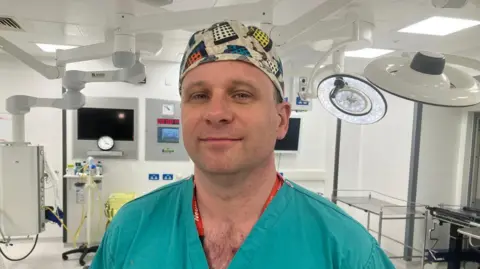 BBC
BBC
Consultant neurosurgeon Stuart Smith said the test could assist "surgical strategy"
A new test has been developed that reduces the time it takes to diagnose types of brain tumours from weeks to just hours, researchers say.
Surgeons have described the "ultra-rapid" method of genetic testing as a "game changer" and say it could improve care and treatment for thousands of patients.
The method has been developed by scientists at the University of Nottingham in partnership with clinicians at Nottingham University Hospitals NHS Trust (NUH).
The research has attracted interest from across the UK, with other NHS hospitals setting up their own testing alongside their existing regimes to gather more evidence about its effectiveness.
A study published on Wednesday reveals the method has already been used in 50 operations at NUH and has had a 100% success rate in diagnosing the exact type of tumour.
There are currently more than 100 identified types of brain tumour, and clinicians need to identify which kind a patient has to determine the most effective way to treat them.

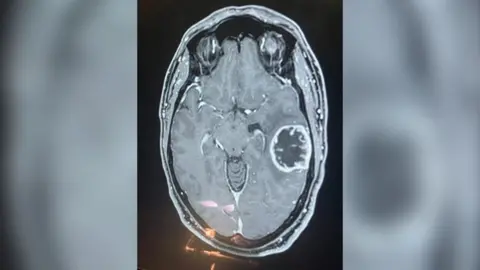 Charles Trigg
Charles Trigg
The new method has returned results for diagnosing types of brain tumours in as little as 90 minutes
Traditionally, samples of tumours are extracted during surgery to be taken away, tested, and examined under a microscope in a pathology lab.
While the process is mostly accurate, it can take up to eight weeks to definitively diagnose the type of tumour.
Stuart Smith, NUH consultant neurosurgeon, said: "Sometimes once we do get the full diagnosis back from the laboratory, we realise it's a type of tumour that would really benefit from what we call more radical surgery to remove every last piece of tumour, if that hasn't been done at the first operation.
"Sadly, sometimes that does mean a patient has to undergo a second, or sometimes even a third operation, to ensure that all the tumour that can be surgically removed has been."

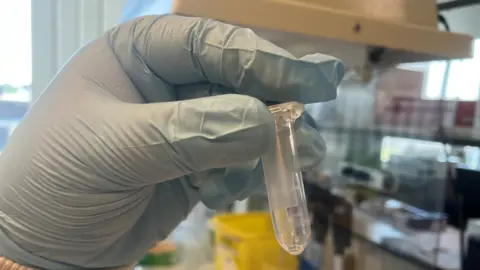
A small amount of DNA from the brain tumour sample is analysed
However, the new technique has seen results returned in as little as 90 minutes, and Mr Smith said it was possible to get a diagnosis while a patient was still in the operating theatre for their original procedure.
It means surgeons would be able to perform more radical surgery, if needed, at the time.
Mr Smith also said faster classification could allow patients to get radiation treatment or chemotherapy, more quickly, and that the quicker diagnoses often reduced the anxiety patients felt while waiting for test results.
"It is a game changer," he added.

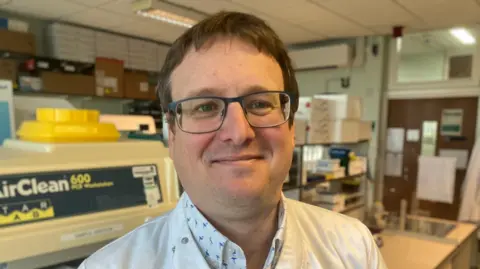
Prof Matt Loose has been working on the new technique since 2018
Prof Matt Loose, a biologist at the University of Nottingham's School of Life Sciences, developed the new method using software dubbed ROBIN.
Using nanopore genetic sequencing, he said, scientists are able to choose which parts of the DNA to look at in detail, delivering a faster result.
He said: "Sadly most brain tumours are incredibly aggressive and waiting six to eight weeks, or however long, for every subsequent test may be too long for that patient.
"Now we can get the results within hours and that can happen within an operation while a patient is still in theatre."

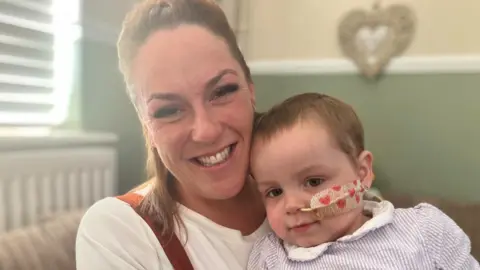
Gemma and her daughter Nancy feature in a new advert for Young Lives vs Cancer
Gemma's daughter Nancy was diagnosed with a brain tumour aged just one in 2023.
The now two-year-old had two brain surgeries, then high-dose chemotherapy treatment to prevent the cancer from coming back.
Gemma, from Castle Donington in Leicestershire, said: "From Nancy's first surgery to finding out what that tumour was, it was two weeks, and that was two weeks of pure hell and anxiety.
"But to have it done that quick it could have saved her that extra brain surgery."
Nancy is now in remission and has become the face of a national TV advert for Young Lives vs Cancer, a charity that supported the family during her treatment.

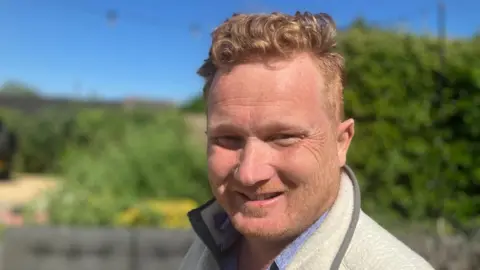
Brain tumour patient Charles Trigg said faster diagnosis would provide "clarity"
Charles Trigg, who lives near Market Harborough in Leicestershire, was diagnosed with a stage four aggressive glioblastoma tumour in April.
He was told his tumour was the size of a golf ball.
The 45-year-old, who has been treated by Mr Smith, said: "To have knowledge is power and it could be the worst knowledge you have, but it gives you certainty, and having that certainty actually makes life a hell of a lot easier.
"The fact they've been able to get back data very quickly that allows an extensive team of people to conduct detailed reviews feels like an amazing blend of science and medicine.
"The pace is phenomenal, and it gives you that certainty and clarity, regardless of whether you like the information, I can't change the information, but what I can do, is take the information I've been given early - and absorb it, feel it and start to plan for the next stage."
Brain tumours are the biggest cancer killer of children and adults under 40, according to The Brain Tumour Charity.
Dr Simon Newman, the charity's chief scientific officer, said: "The delivery of an accurate diagnosis within hours of surgery will be transformative for all patients ensuring rapid access to the optimal standard of care and - crucially - removing the uncertainty patients face when having to wait weeks for their diagnosis and prognosis."
Queen Elizabeth Hospital Birmingham, and Great Ormond Street Children's Hospital and Kings College Hospital in London, are among those now setting up their own testing of the method alongside their existing processes.
.png)
 7 months ago
22
7 months ago
22
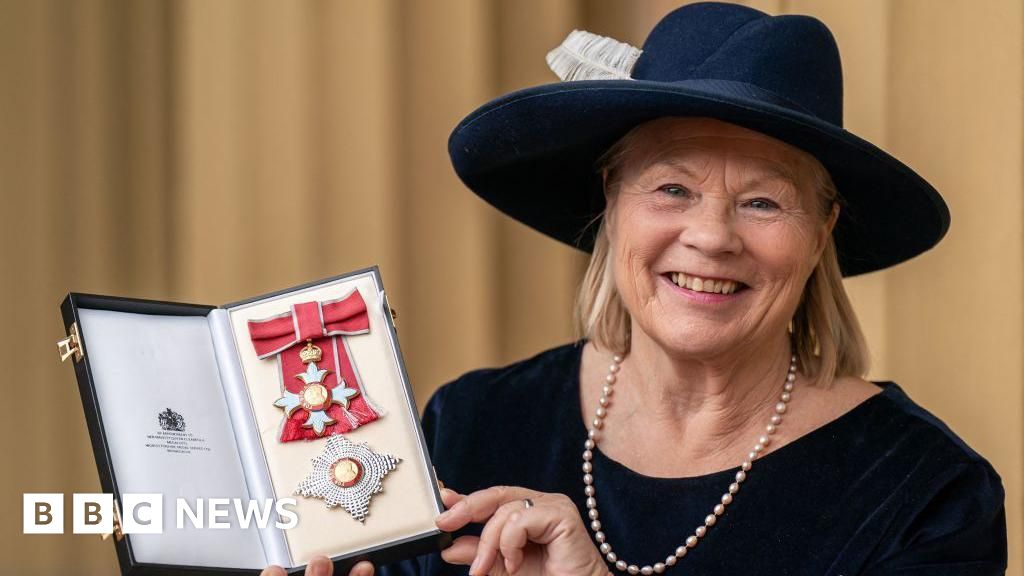





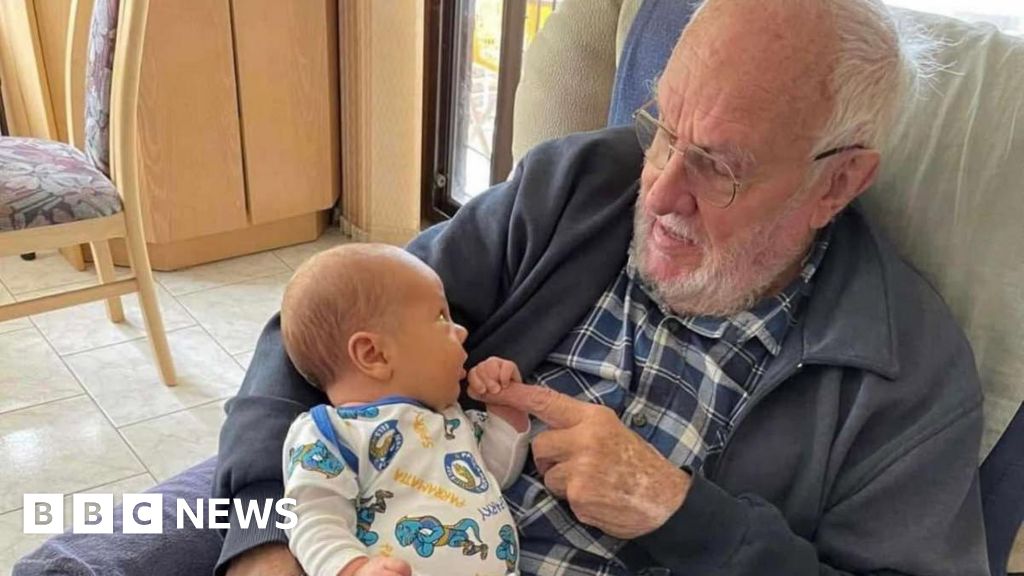

 English (US) ·
English (US) ·